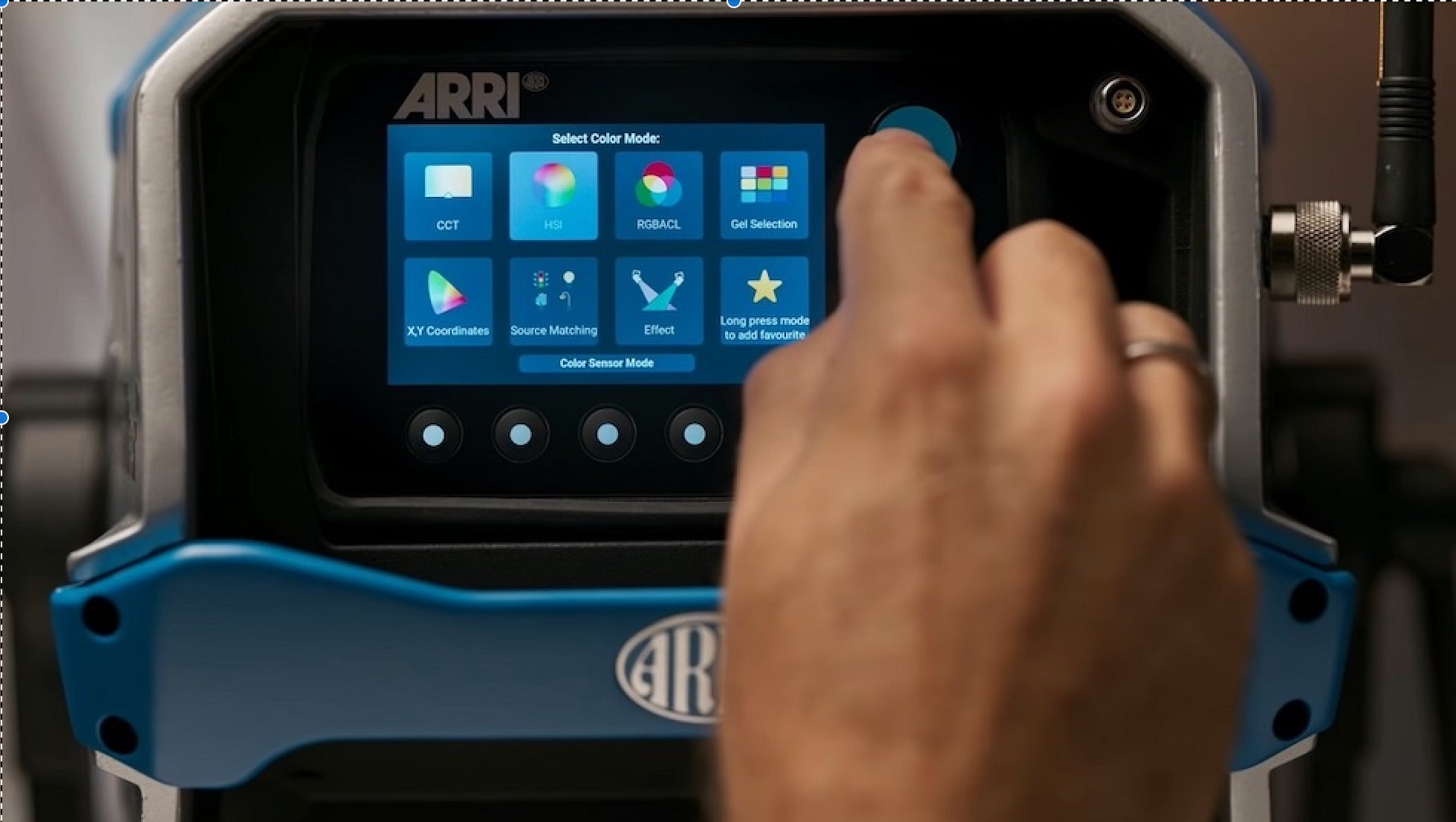ARRI is a highly respected company that has been making high-end film equipment for over 100 years. The Orbiter is the next step in lighting from ARRI after the massive success of the Skypanel family of lights, which are used on almost every level of film production. There are very few lights which are as versatile as the ARRI Orbiter. I work as both a cinematographer and a gaffer and, in both those roles, I have been very impressed by the versatility of the Orbiter.
A Hard Day’s Light
The Orbiter is a COB LED point source. This means that, without any modifiers attached, it emits a single source of light that casts hard-defined shadows. When unmodified, the light has an 80-degree spread of light. Although, in order to get the light to strike, you must attach either an optic or another ARRI-certified accessory otherwise you will get an error message.
The open face optics that are available for the Orbiter are, as of now, 60°, 30°, and 15°. All these optics maintain the hard light of the sensor with the wider lenses. This allows you to cover a larger area and the narrow 15° open face spotting the light into a tight beam. Having a hard light is oftentimes the right way to go as it gives you more options. It can be preferable to having a soft light as you can alter a hard light to make it soft, but the opposite is not true.
ARRI Orbiter Accessories
In order to take that hard light and make it soft, ARRI has partnered with DoPchoice and Chimera to modify the Orbiter’s output into a beautifully soft and controllable light. Just like the Orbiter, and exactly as you would expect from DoPchoice and Chimera, these accessories are built to last. The available attachments are several different sizes of soft boxes, domes, octa banks, as well as egg crates and grids which attach to control the spill of the light.


Built Like a Tank
The Orbiter has a unibody design with no separate power supply. This means it is a slightly heavier fixture than a light that separates that power supply out from the fixture. However, this allows the Orbiter to set up much quicker and easier as you don’t have to plan where to put the power supply. You also don’t have to run cabling both from the outlet to the power supply and from the power supply to the head. This is very useful when doing overhead rigging or placing a light in a tight space and keeping the cable out of shot.
For mounting the Orbiter uses ARRI’s new proprietary Quick Lighting Mount (or QLM). This is a very robust mount which is able to handle the weight of larger light modifiers. I have attached almost all the different modifiers options onto the Orbiter. They always slot in extremely easily, which is not always the case with other LED mounting options.

Also, every ARRI light I have worked with is extremely tough. They are built to withstand hard usage, which is very common on film sets. The Orbiter is absolutely no exception. It has an aluminum cast body which will definitely keep this unit working for many years to come.
User Interface
This new Lighting Operating System, LiOS, is a welcome update. The new LiOS is intuitive, sleek, and visually appealing. It is much faster to navigate and I absolutely love it. I am also a huge fan of the control panel’s ability to be popped out and controlled at a distance from the light.


Lighting Engine
Now that we’ve discussed the outside of the Orbiter, let’s get into what makes this light amazing from the inside — starting with the ARRI Spectra six-color LED light engine. The colors of this engine are red, green, blue, amber, cyan, and lime, which is different from other manufacturer’s RGBWW LED arrays. A
This combination leads to a much wider range of colors, as well as those colors being more accurate. This includes the all-important white light from a Kelvin range of 2,000 to 10,000. This shows in the Orbiter’s very high TLCI, SSI and CRI ratings. This technology is only found on the ARRI Orbiter.

The Orbiter is definitely a major jump in lighting technology from the ever-impressive ARRI Group. Their engineering and innovation are impressive. I know that I will be seeing this light on many film sets in the future.






